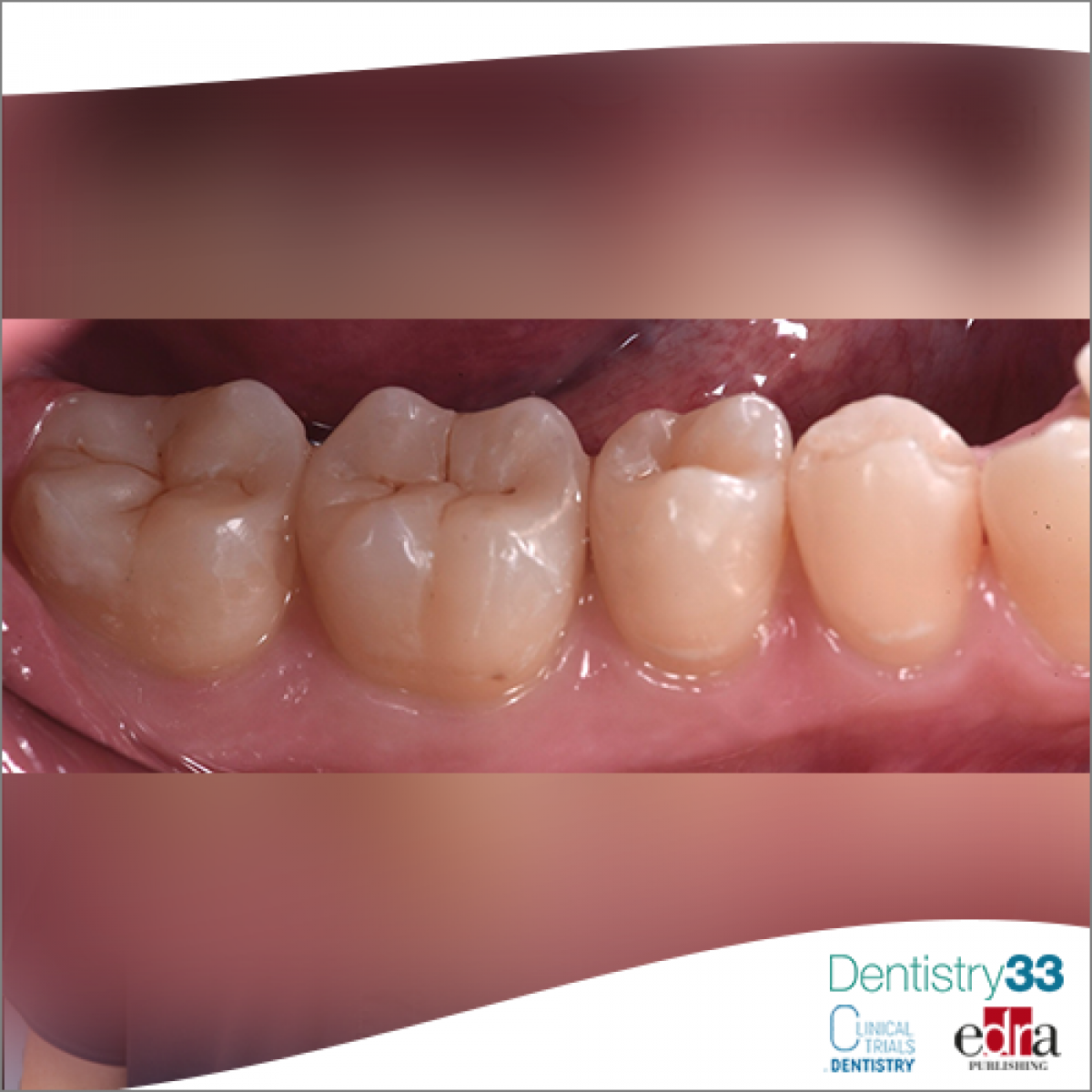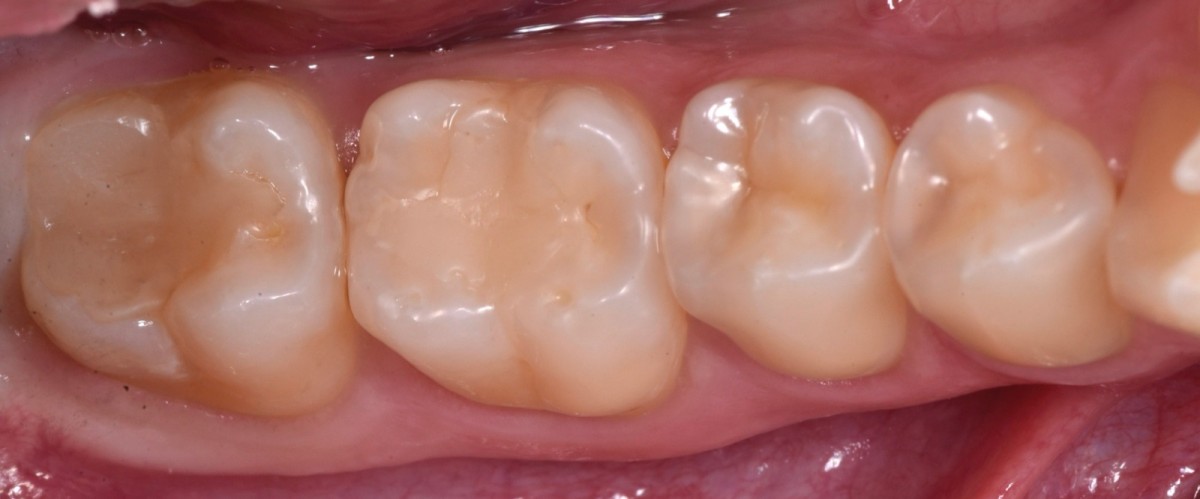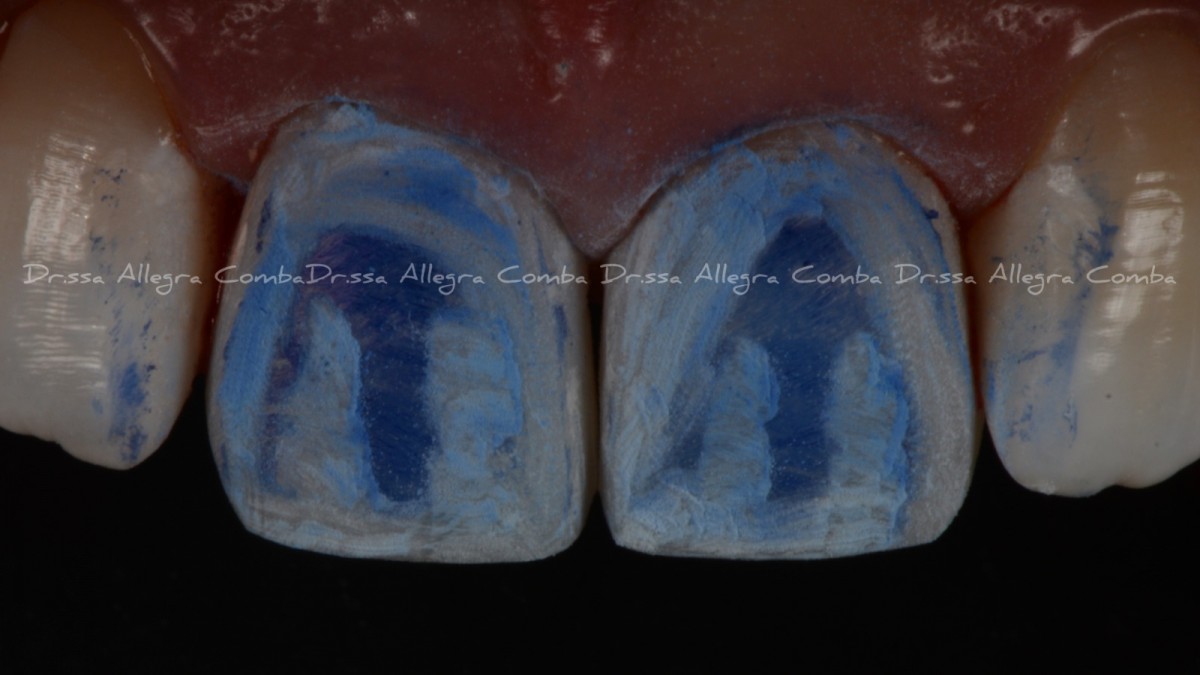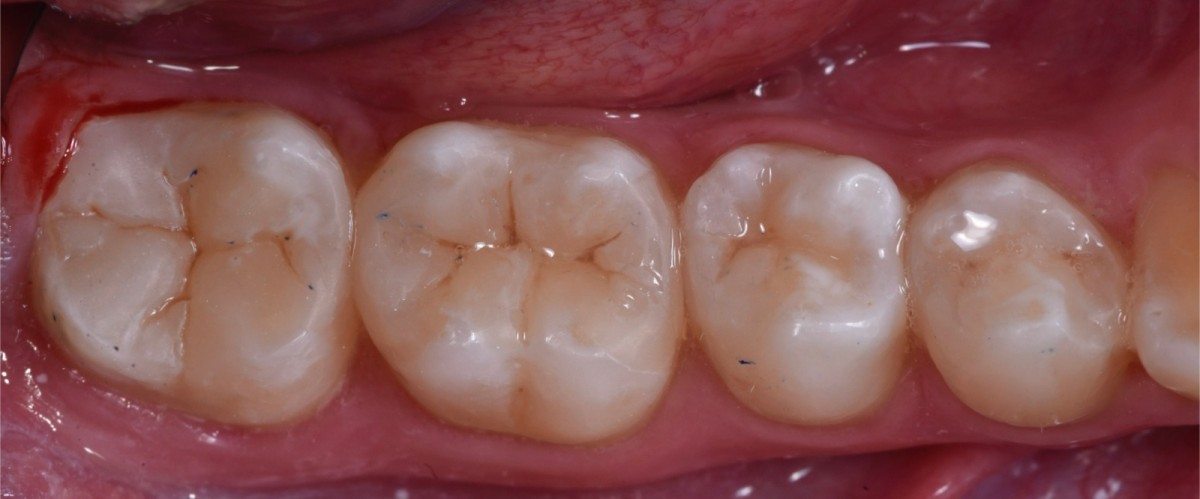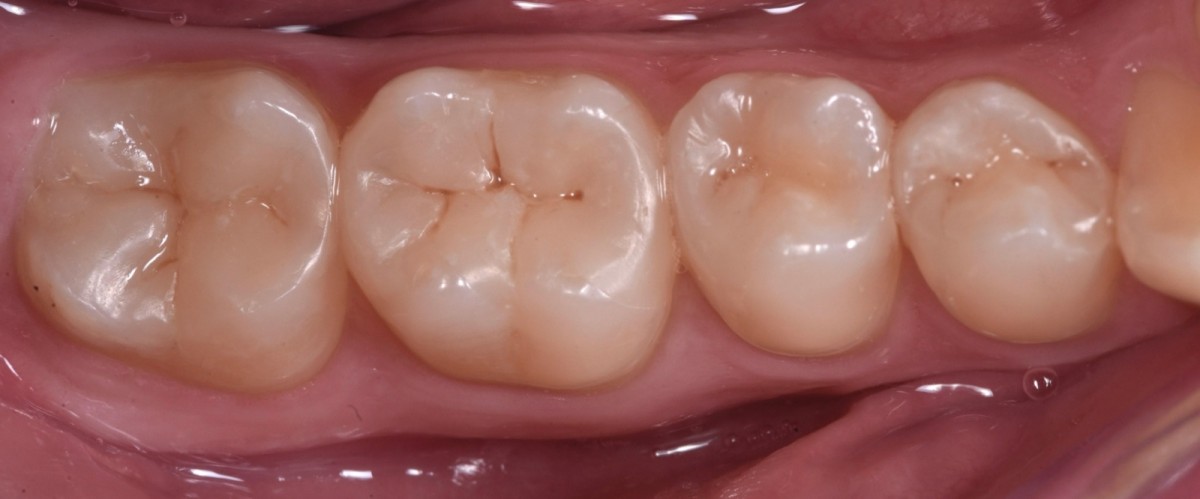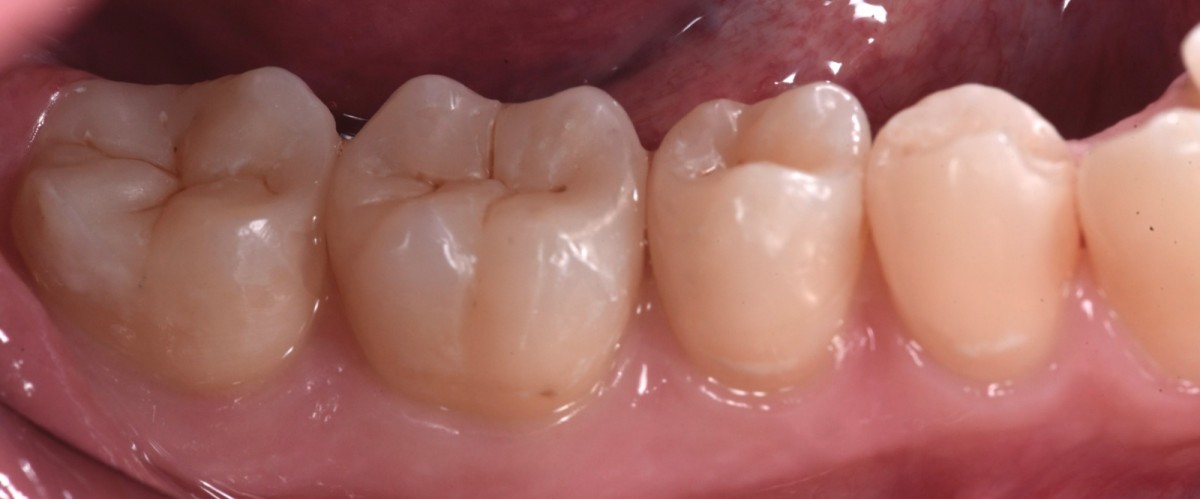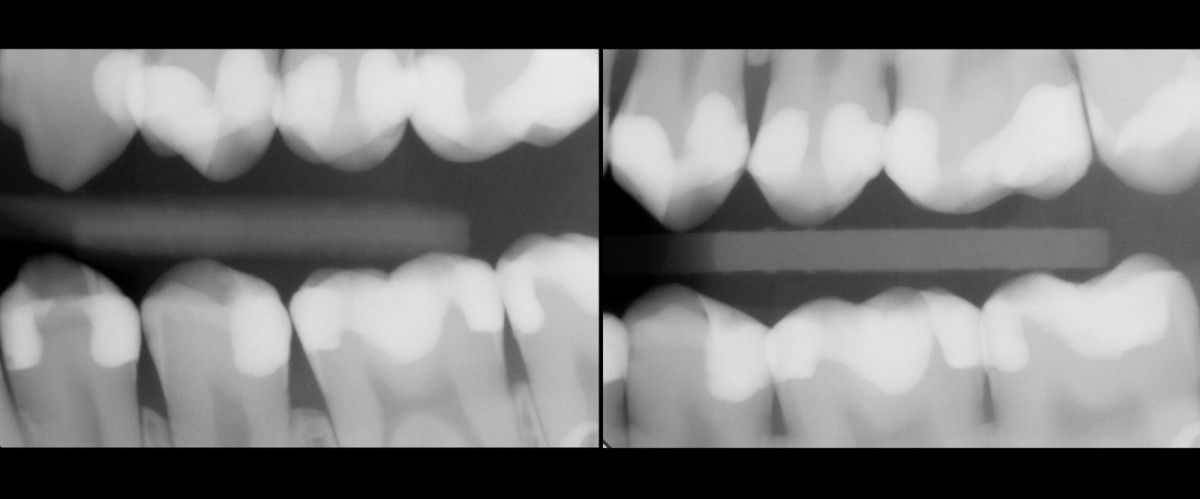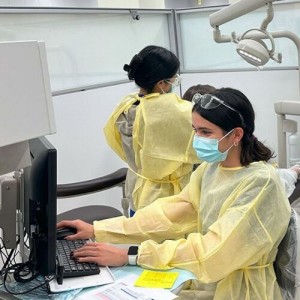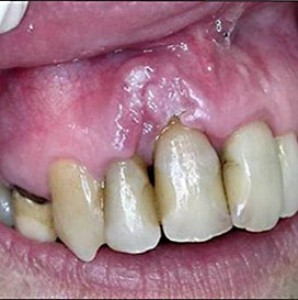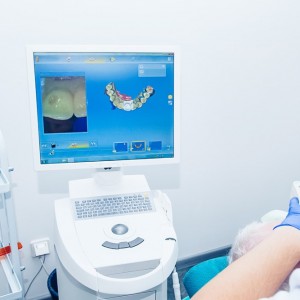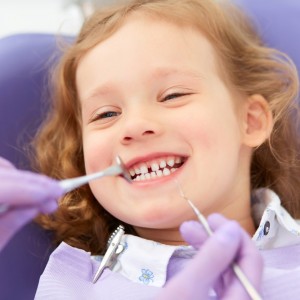
Quadrant direct composite rehabilitation in a young patient.
Author: Andrea Baldi
A 24-year-old male patient came to my attention reporting sensibility related to sweet and cold on the 3rd quadrant. The general medical history revealed nothing relevant.
Clinical examination highlighted old direct restorations on 3.7 and 3.6, with irregular margins and initial signs of infiltration. Rx examination (orthopantomography and bitewings) revealed primary interproximal decays with dentinal involvement on 3.4, 3.5, 3.6 and 3.7. Vitality test was carried out and confirmed that all elements were vital.
According to the fact that the patient was young and all the teeth had a sufficient quantity of sound tissue structure, a minimally invasive approach with direct restorations was proposed.
Oral hygiene motivation was carried out, alongside with proper periodontal treatment (scaling, polishing) before taking initial photo (Fig.1). Initial rx bitewing of the quadrant (Fig.2).
Isolation with rubber dam (Fig.3).
Initial cavity cleaning of all elements (Fig.4). 3.6 mesial and 3.5 mesial were not involved in first place, in order to evaluate them with direct view, since it was not clear if there was cavitation or just demineralization of the enamel. A horizontal slot approach was attempted on 3.4 mesial in order to preserve the marginal crest.
3.7 and 3.6 cavity cleaned. The mesial area of 3.6 presented soft tissue and cavitation, therefore it was opened and cleaned, revealing a dentinal involvement (Fig.5).
Adhesive procedures were carried out with a two-step self-etch adhesive system with selective enamel etching for 30s. An indirect pulp capping was performed on 3.6 with an MTA-based photo-curable material (Fig.6).
Detail of matrixes adaptation on 3.6 and 3.7 (Fig.7).
3.4 and 3.5 cavity cleaned. The mesial area of 3.5 was found to be only demineralized, and therefore not requiring restorative treatment. The horizontal slot approach on 3.4 failed, due to insufficient dentinal sustain to the cuspal crest, leading to a conventional vertical approach (Fig.8).
Detail of 3.5 mesial area, showing the demineralization without cavitation. In order to avoid further damage and to protect the demineralized enamel, a resin infiltration with a dedicated system was performed (Fig.9).
Detail of 3.4 and 3.5 walls built after the same steps reported before (Fig.10)
All the interproximal walls were finished and polished, then a universal adhesive system was placed to complete the occlusal part (Fig.11).
Final restorations before polishing (Fig.12).
Immediately after rubber dam removal (Fig.13).
6-months follow up (after finishing and polishing) (Fig.14).
Detail of the vestibular part, showing good health of periodontal tissues. 3.8 element will be extracted as soon as possible to avoid probing distal to 3.7 (Fig.15).
Final rx bitewings (Fig.16).
 Related articles
Related articles
Restorative dentistry 12 September 2025
Traumatic tooth injuries involve function and aesthetics and cause damage that range from minimal enamel loss to complex fractures involving the pulp tissue and even loss of the tooth crown.
The purpose of restorative dentistry is to restore and maintain health and functional comfort of the natural dentition combined with satisfactory aesthetic appearance.
Oral surgery 15 July 2025
The influence of patients' decisions on treatment planning in restorative dentistry
As part of treatment planning, options are presented to patients by dentists. An informal discussion takes place involving a cost-benefit analysis and a treatment plan is agreed.
Restorative dentistry 01 July 2025
Advances in CAD/CAM Technology for Chairside Restorative Dentistry: A Workflow Analysis
Chairside CAD/CAM technology has revolutionized restorative dentistry, offering streamlined workflows and improved patient outcomes.
Pediatric restorative dentistry is a dynamic combination of ever-improving materials and tried-and-true techniques.
 Read more
Read more
Editorials 10 October 2025
With proud smiles and crisp white coats, ninety-three learners from the DDS Class of 2029 and the International Dentist Pathway Class of 2028 marked the start of their dental careers at the UCSF...
Periodontology 10 October 2025
Continuous professional development (CPD) in Periodontology refers to the overall framework of opportunities that facilitate a life-long learning practice, driven by the learner-practitioner and...
TheraBreath, the #1 alcohol-free mouthwash brand in the U.S.*, has introduced a new line of dentist-formulated, clinically tested toothpastes designed to support professional oral care...
News 10 October 2025
New officers and trustees were installed at the Minnesota Dental Association’s Leadership Conference on September 19 in Minneapolis.
News 10 October 2025
Smartee Denti-Technology today announced that Professor Gang Shen, its Chief Scientist and Executive President of TaiKang ByBo Dental, has once again been named to the World’s Top 2% Scientists...


